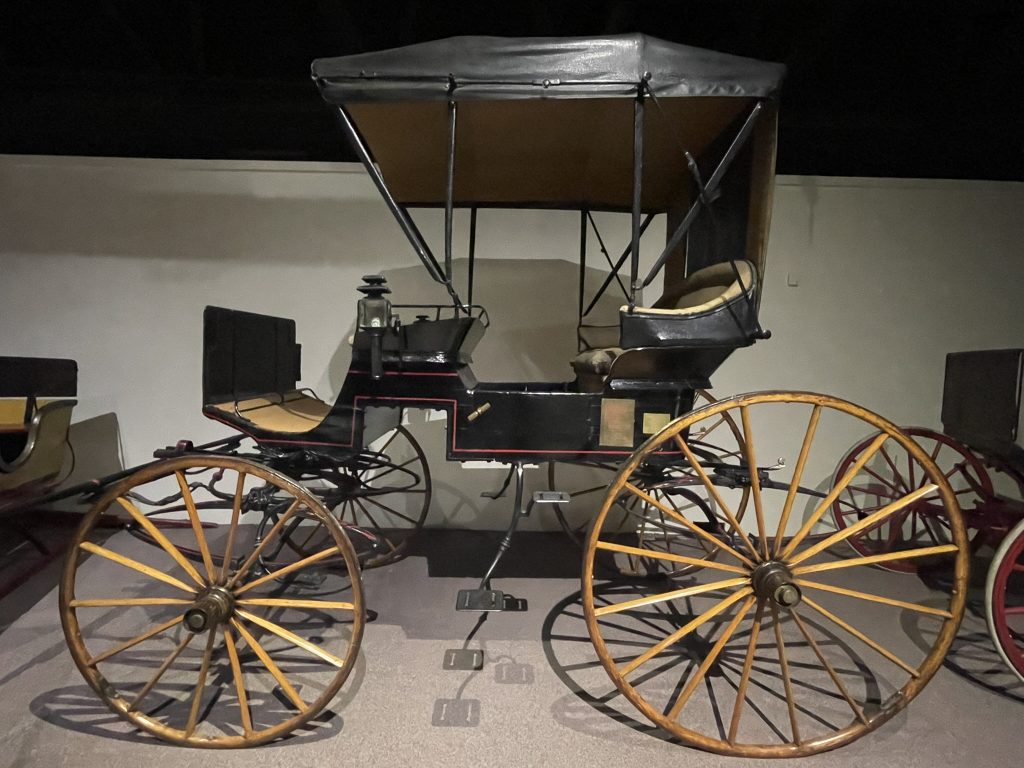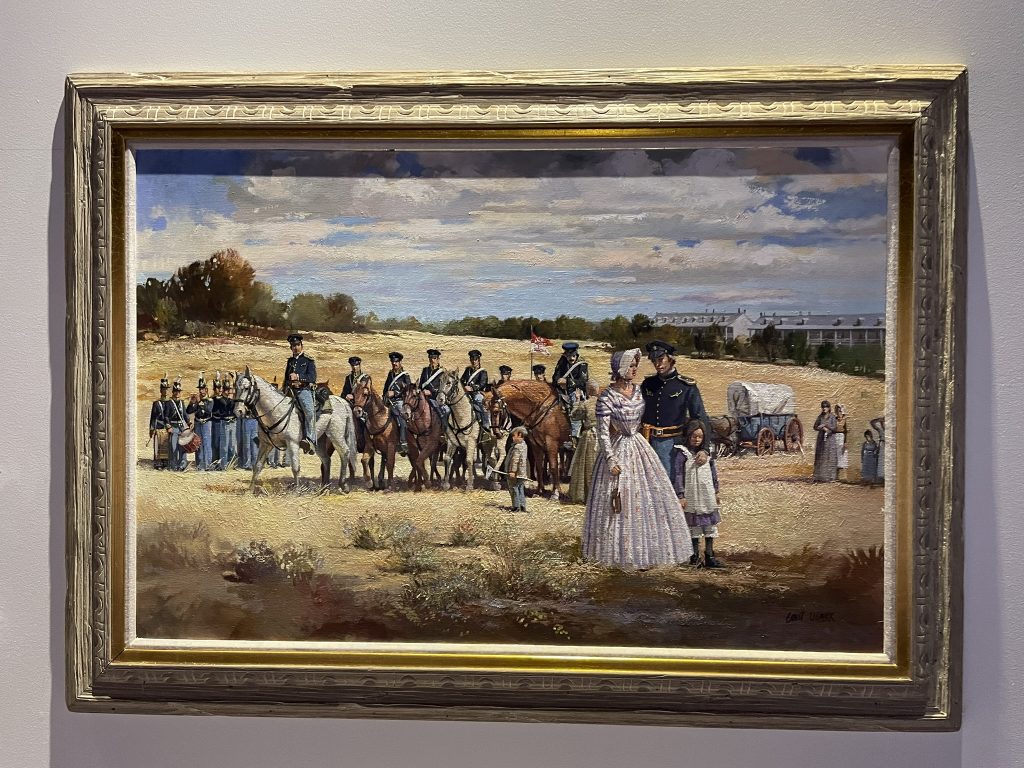There was plenty to keep us occupied as we passed through Kansas. Here are some of the sites we visited in the northeastern part of the state.

Maybe driving across eastern Kansas isn’t the most exciting thing, but one way to make it more interesting is to listen to a book about a serial killer family. The Benders had a cabin in southeast Kansas in the late 1800s, where they hosted – and sometimes killed – travelers who stopped for a meal or a night’s rest. The book is Hell’s Half-Acre : The Untold Story of the Benders, America’s First Serial Killer Family by Susan Jonusas. Affiliate link.
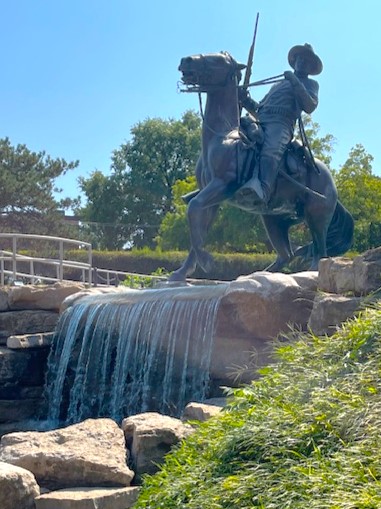
The Buffalo Soldier Monument at Fort Leavenworth, created by Eddie Dixon and dedicated in 1992. It commemorates the 10th Cavalry unit, which was initiated in 1866 in Fort Leavenworth and which was comprised of African American soldiers. Along with 3 other Cavalry and Infantry units, these men were known as the “Buffalo Soldiers.” These soldiers went on to play major roles in the Army, including fighting in the Indian Wars from 1866-1886.

The Dust Bowl affected big parts of Kansas, Colorado, Oklahoma, Texas, and New Mexico – all states we’d just driven through. They “terrorized the High Plains in the darkest years of the Depression were like nothing ever seen before or since” (per the book blurb). We listened to The Worst Hard Time: The Untold Story of Those Who Survived the Great American Dust Bowl by Timothy Egan, and it was fascinating in a horrifying kind of way to hear what those people endured. Affiliate link.
Red Rocks State Historic Site
We stopped in for a tour of Red Rocks in Emporia, the home of the William Allen White Family. White (1868–1944) was an author of many books, a Pulitzer Prize-winning journalist, the editor and owner of The Emporia Gazette (which is still run by his descendants), and political adviser to presidents.
If you’ve been following along, you know how our math works: Author + Presidents = Of Course Doug Wants to Go. Not surprisingly, we were the only ones on the tour.
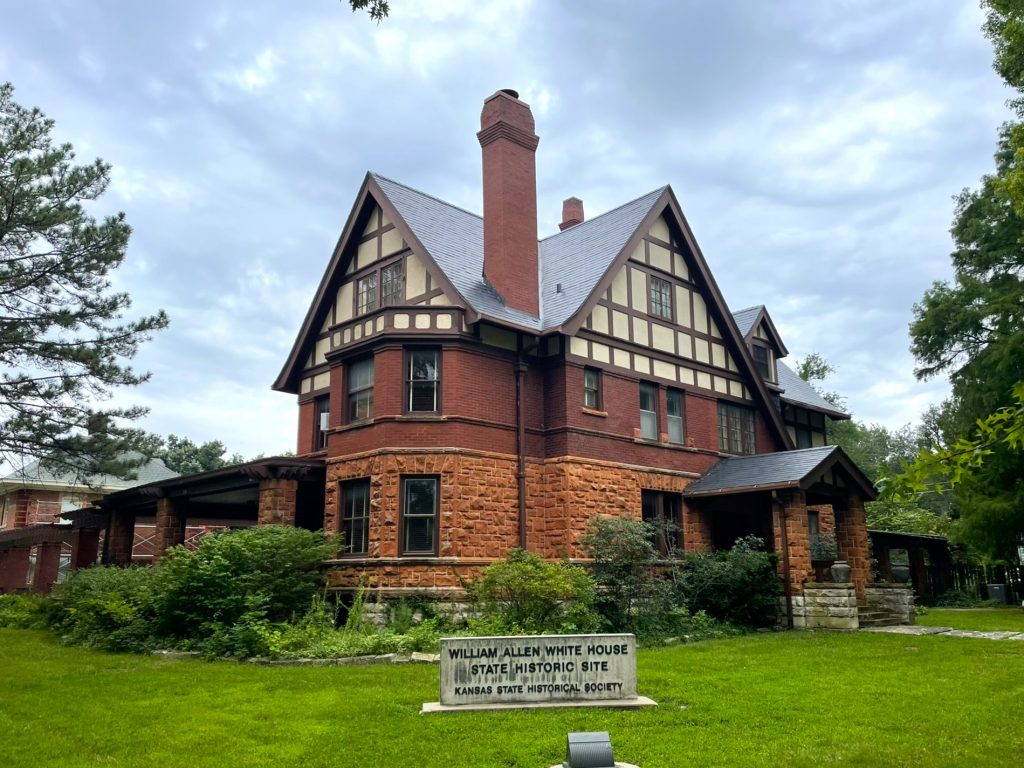
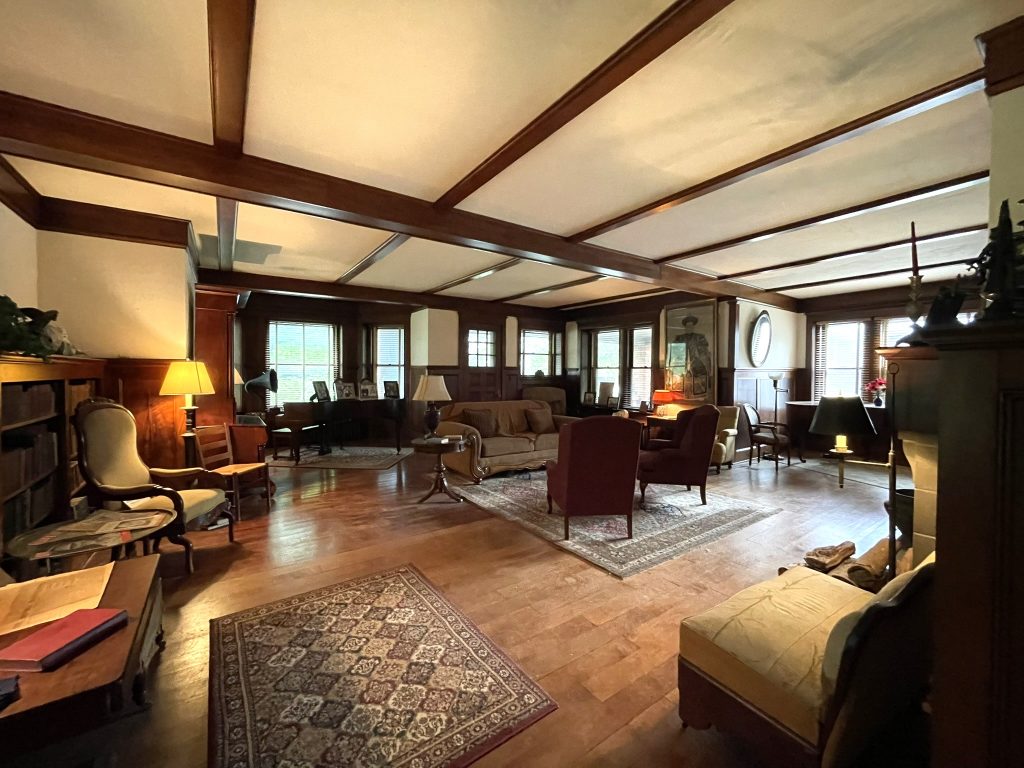
Construction on the house began in 1887, but was still an unfinished shell (thanks to financial issues) when the Whites purchased it in 1889. A major fire in 1920 required extensive rebuilding. The home remained in the White family until 2001, when it was donated to the state. It’s a pretty-enough house, but nothing especially exciting.
Wikipedia calls White “a spokesman for middle America.” He rose to prominence with his articles in The Emporia Gazette, which were often widely reprinted. “With his warm sense of humor, articulate editorial pen, and uncommon sense approach to life, White soon became known throughout the country” (Wikipedia). He received ten honorary degrees in his lifetime!
Topeka Equality Center
This was one of my favorite stops, because it is a big and appropriate counter to the Westboro Baptist “Church.” The WBC, if you recall, is a hate group that targets LGBTQ, veterans, and Jewish communities. They notoriously protest at the funerals of veterans and victims of school shootings, among other equally unforgiveable examples, blaming their deaths on homosexuality, etc. They are the lowest of the low.

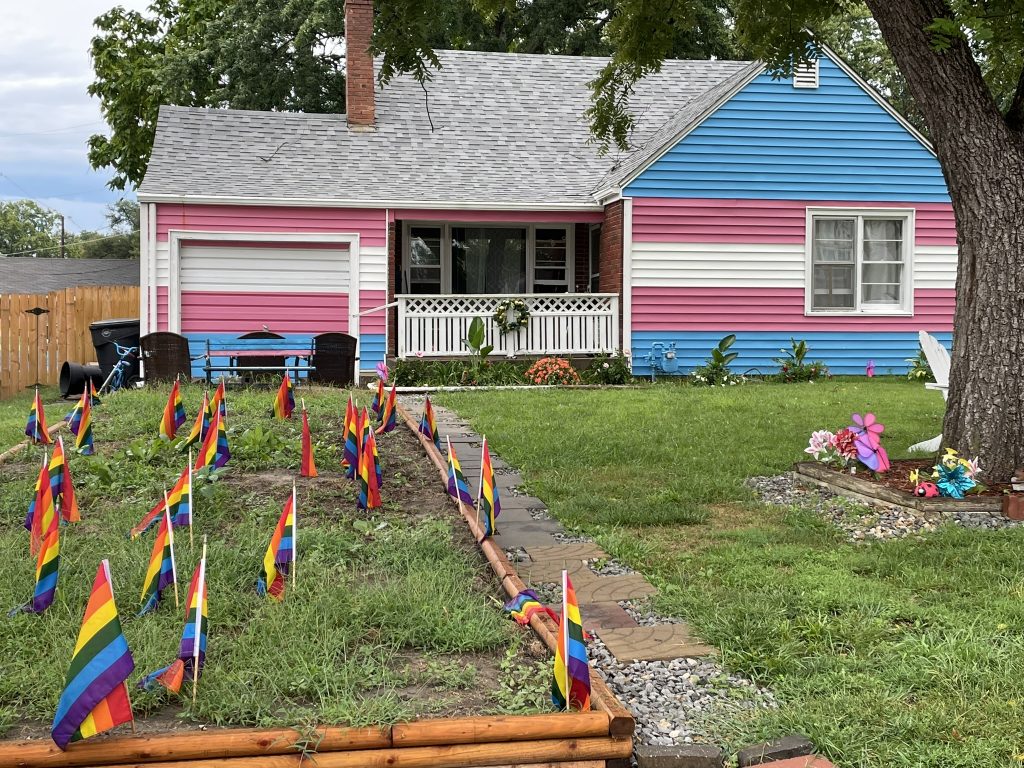
The WBC, even though it is housed in a residential neighborhood, has marquee signs scrolling their hate messages 24 hours a day. How is this ok? Whatever. Planting Peace, a nonprofit humanitarian organization whose purpose is “spreading peace in a hurting world,” set up shop directly across the street. They purchased two homes (in 2013 and 2016) painting one the colors of the pride flag, and the other the colors of the transgender flag.
Mulvane Art Museum
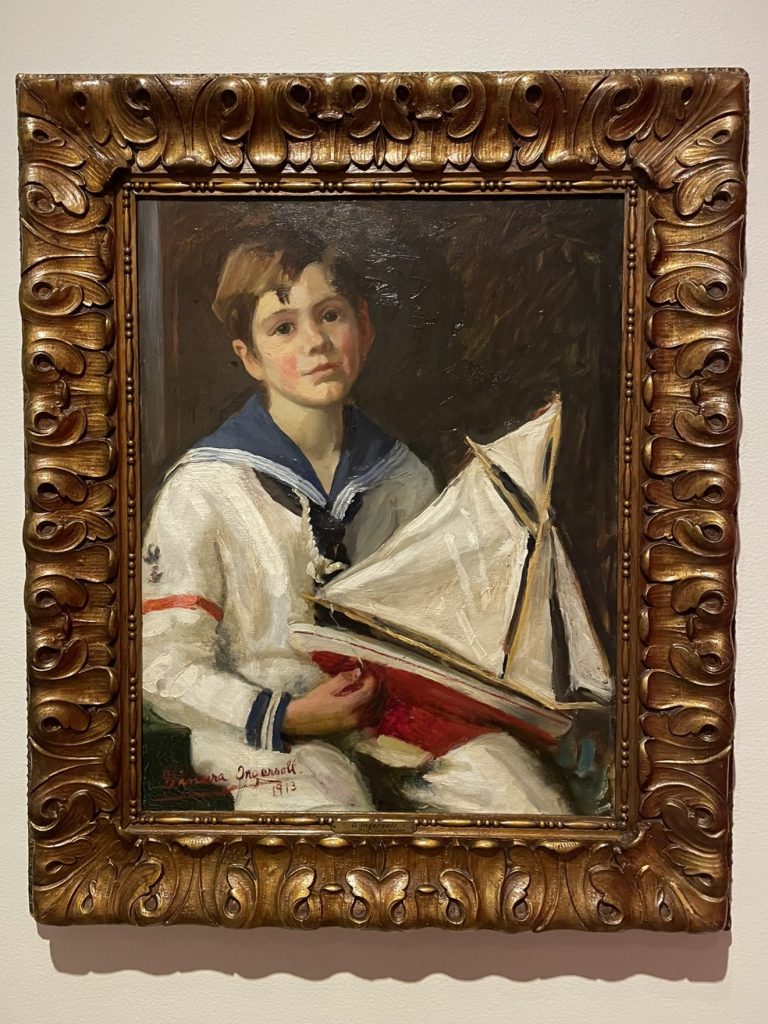
The Mulvane Art Museum is on the campus of Washburn College in Topeka. It’s a relatively small museum with a collection I wasn’t especially excited about, but we still managed to find some pieces that interested us, so all was not lost.
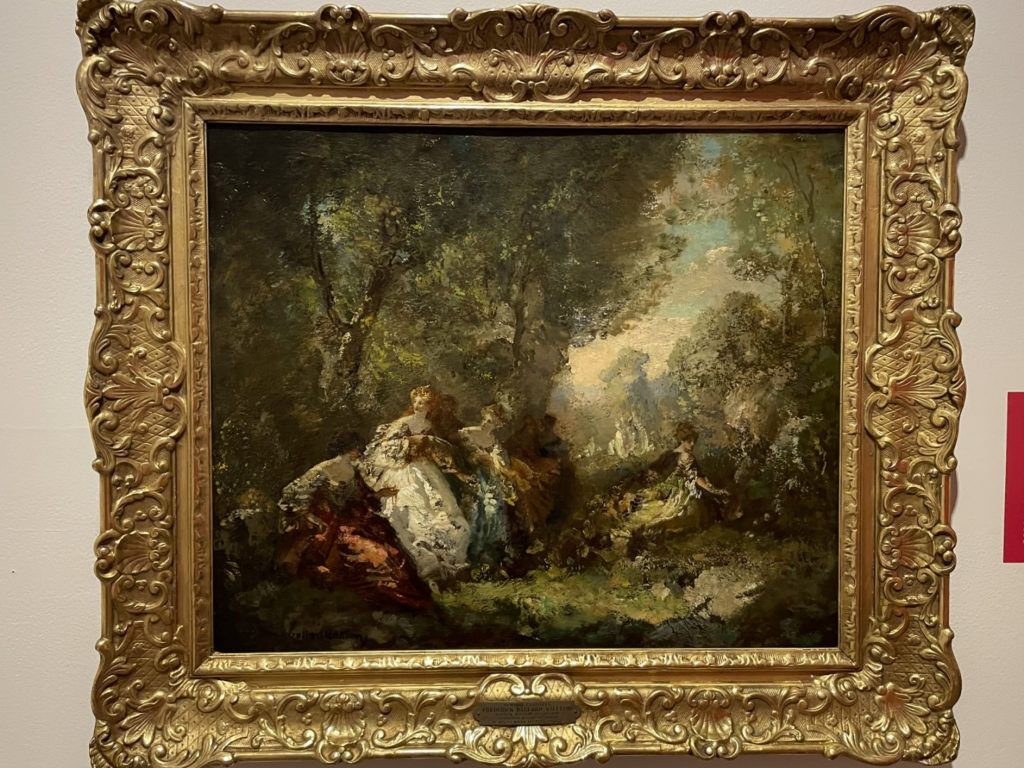
The two pieces I liked best were both by artists I was not familiar with. The Young Sailor (1913) by Ginevra Ingersoll, and Summer Pastoral (c. 1908-1933) by Frederick Ballard Williams. Both were from an exhibit, Endangered Art: Reclaiming a Legacy, featuring paintings acquired in the museum’s early days, when less was known about preservation. “Over the years, they were exposed to pollutants, fluctuating temperatures, and UV light,” per the exhibit description. The paintings featured have undergone extensive restoration in order to save them.
Brown v. Board of Education National Historic Site
I was mildly disappointed in the Brown v. Board of Education National Historic Site in Topeka, which I had been looking forward to as part of our Civil Rights education. It’s located in Monroe Elementary School, which had been one of four segregated elementary schools for African Americans in Topeka.
In 1951, Oliver Brown and 12 other local black families filed a lawsuit against the Topeka Board of Education because their children were required travel to segregated schools rather than enroll in the schools closest to their homes. This case was consolidated with four other cases from different areas of the country, all under Brown v. Board of Education.
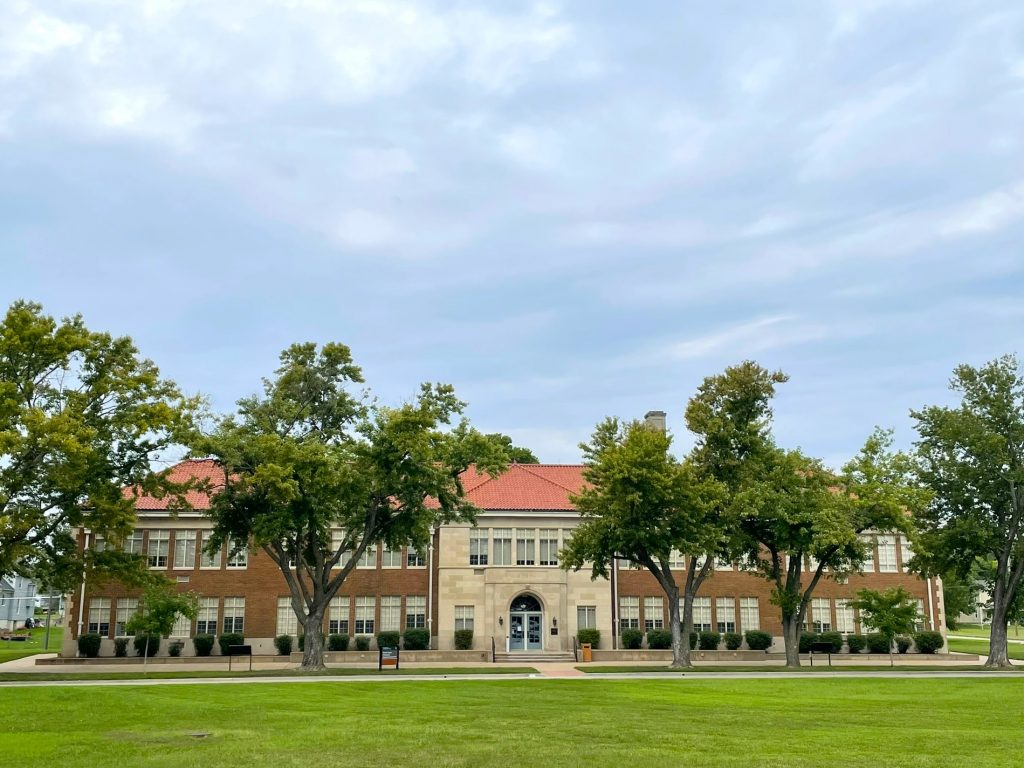
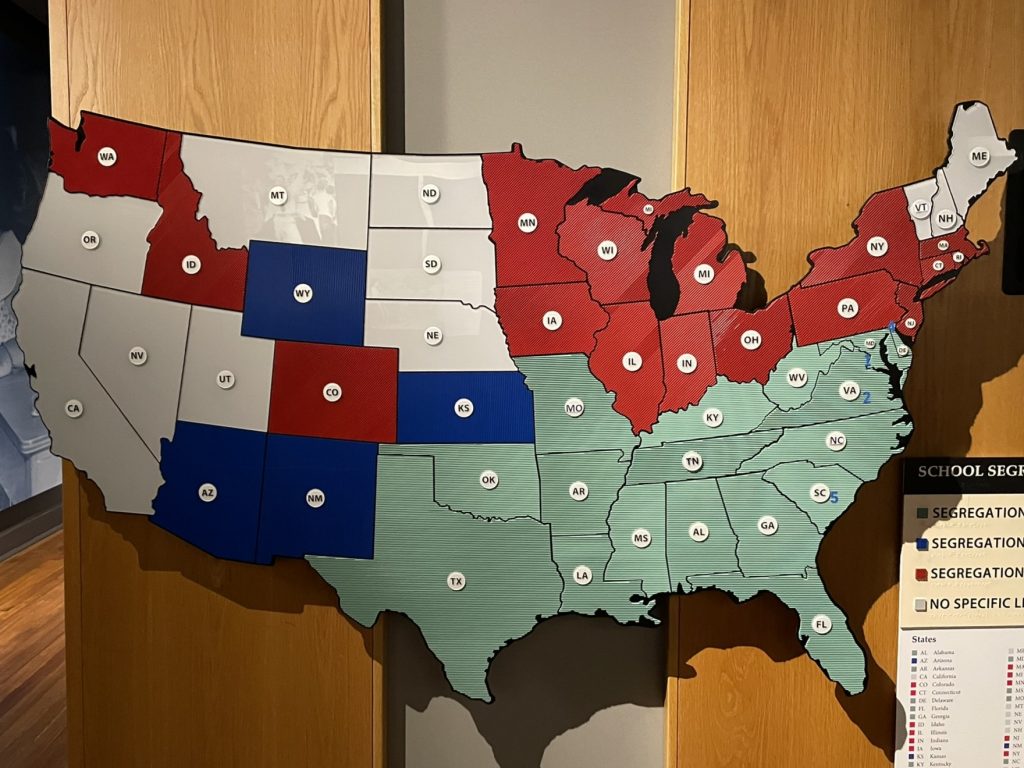
I had always thought that the basis behind the argument was that the facilities for white and black students were not equal at the different schools, so therefore the “separate but equal” doctrine that had existed for decades (since Plessy v. Ferguson, 1896) was not valid. However, when you see the Monroe school, you think “this seems pretty nice.”
In fact, that’s why it was chosen as the lead case: “the African American schools in Topeka were essentially equal to white schools, so segregation itself, not equality, would be the issue in question” (per the site brochure). In 1954, the Supreme Court issued a 9-0 decision in favor of the Browns, stating that “separate educational facilities are inherently unequal.”
The site is primarily made of rooms of exhibits, and most of the information about racial inequality in education was about schools elsewhere in the country. I felt that we had seen much better exhibits on this subject in Civil Rights museums we had previously visited. Still, it’s good that the building stands as perpetual symbol of the battle for racial equality.
World’s Largest!

Of course we went to see the World’s Largest Russian Egg in Topeka. I couldn’t find much intel, but it seems to have been created as part of a Mulvane Art Center exhibit, “Treasures of the Tzars,” back in 2001. It’s 6.5 feet tall.
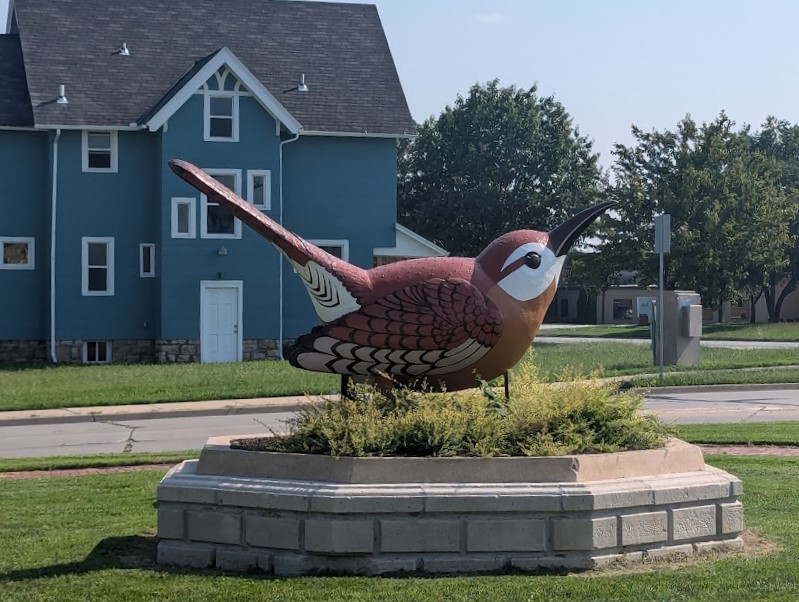
You can’t stop to see the World’s Largest Russian Egg in Topeka without also stopping to see the World’s Largest Wren right up the street. It was created in 1947 by radio station WREN, but placed in a tiny park when the radio station folded in 1987.
Frontier Army Museum
The Frontier Army Museum in Fort Leavenworth is a rambling military museum with an odd assortment of stuff. I feel like these military museums all blend together a bit, though this one did have a pitcher from which Lincoln drank a glass of beer in 1859. I don’t really have anything more to add.
